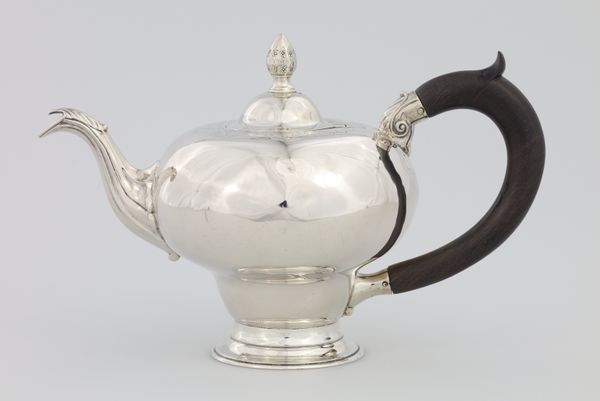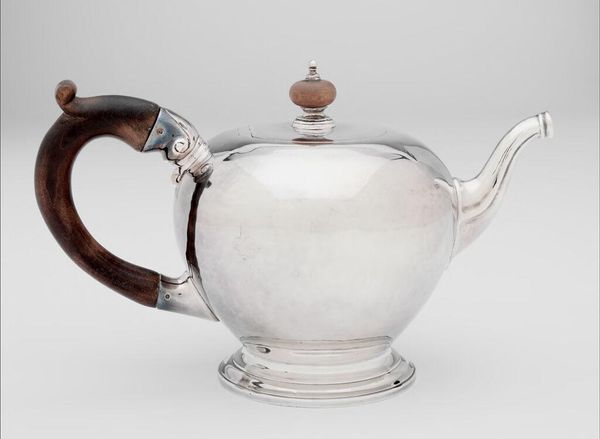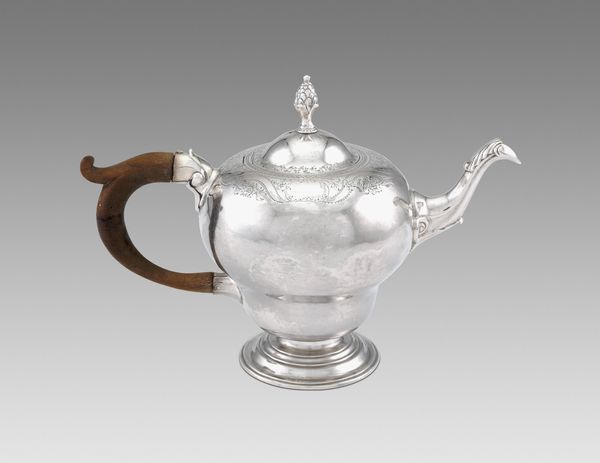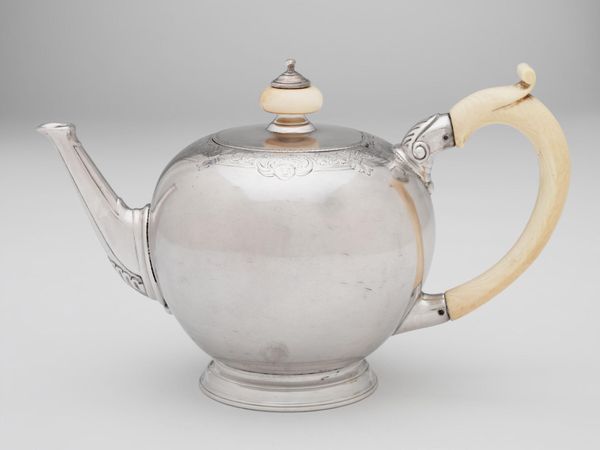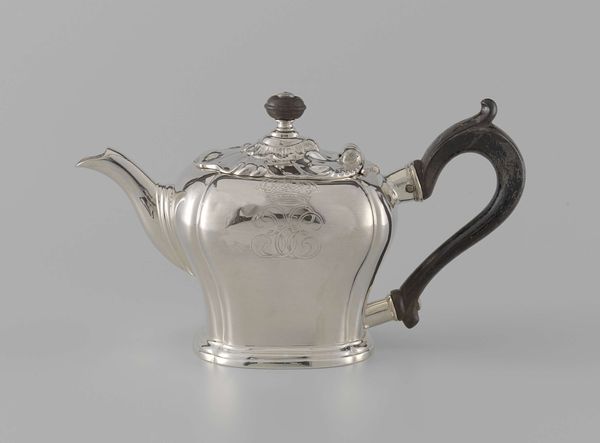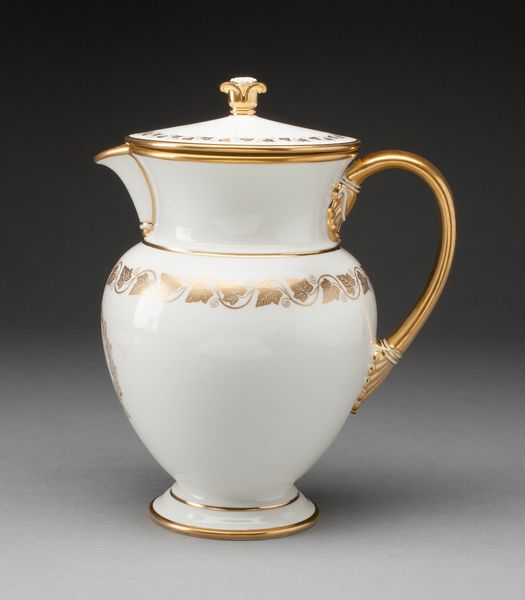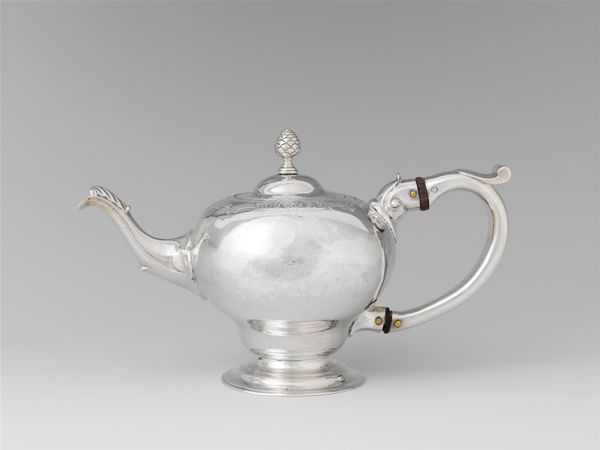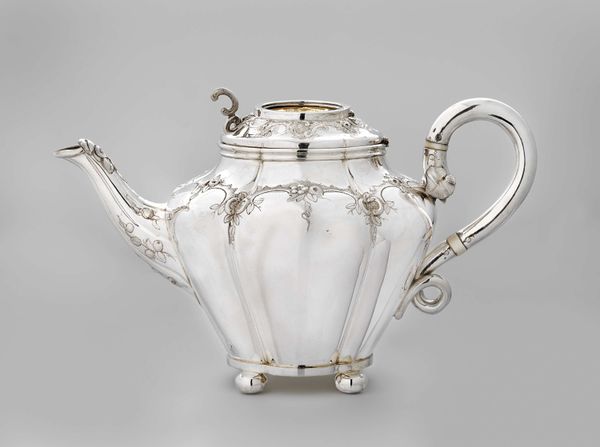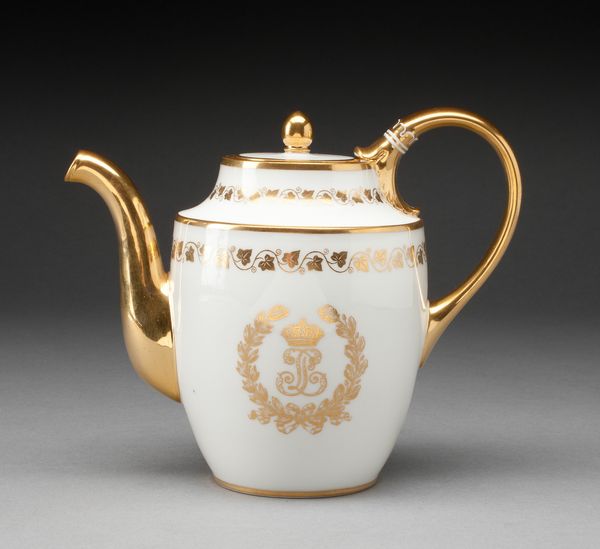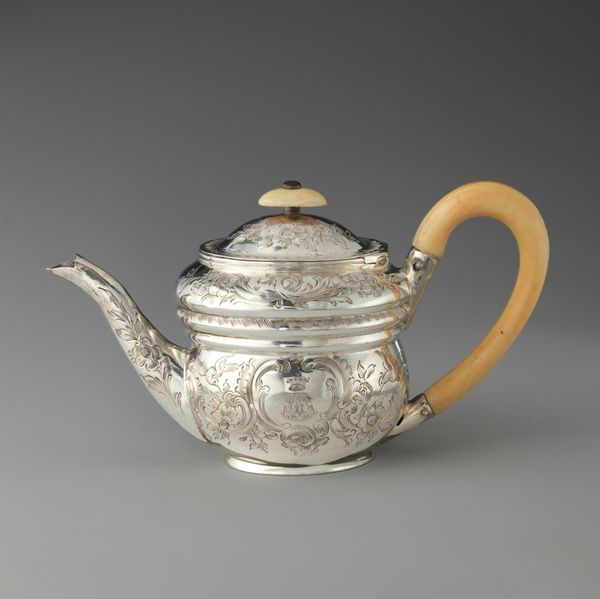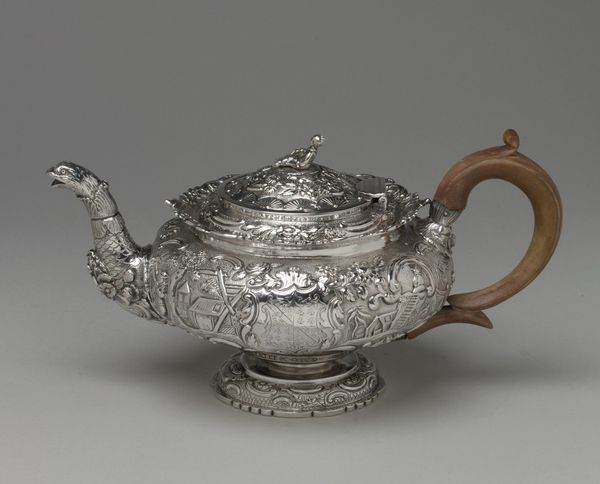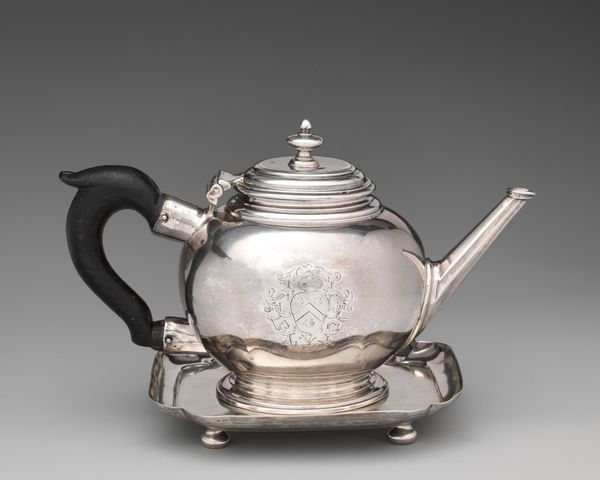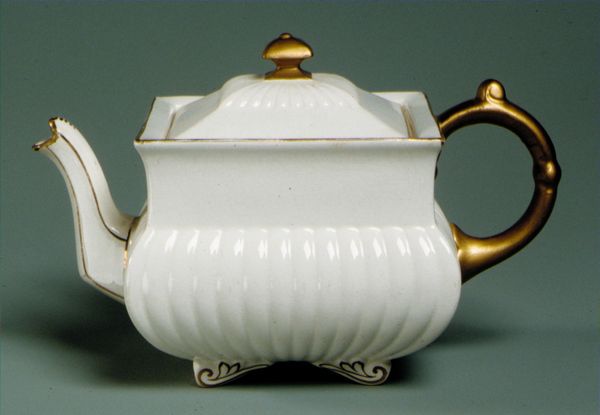
silver, metal, ceramic
#
silver
#
metal
#
ceramic
#
england
#
ceramic
#
decorative-art
Dimensions: 7 x 9in. (17.8 x 22.9cm)
Copyright: Public Domain
Curator: Here we have a striking silver teapot made in England, dating back to 1768, and currently residing here at the Minneapolis Institute of Art. What's your initial take? Editor: It’s surprisingly...earthy, despite being mostly silver. The dark wood of the handle really grounds it. I'm struck by the contrast, this tension between refined luxury and rustic simplicity. Curator: Absolutely. These pieces, especially in silver, signaled wealth and status, aligning tea drinking with aristocratic culture. Having such an item was performative, reinforcing social hierarchies through material display. Editor: And consider the labour. The silversmithing, the shaping of the wood. This wasn't mass production; it involved skilled artisans and distinct making processes. How were these skills transmitted, controlled? Were the makers ever acknowledged, or just subsumed by the commissioner's name? Curator: It's signed by Abraham Portal, indicating acknowledgement and agency within the production, suggesting it enhanced his reputation within elite circles and broader society. But it definitely makes you consider the politics of commissioning and consumption. Who brewed and drank from it, what conversations and rituals did it serve? Editor: The choice of materials fascinates me too. Why silver for the body, so prone to tarnishing? Was it purely for show, despite practical concerns? It speaks of a culture valuing appearance over pure functionality, highlighting privilege and access to the labour required to keep such an object in good shape. And look at the handle's wood grain; such variance is always interesting to consider regarding material sourcing. Curator: Right, the value system projected. This teapot as an object isn't only beautiful in its own right, but it performed as a marker of good taste. Also think of the global trade network it implies: sugar and tea coming in, likely through complex routes bound up in colonialism, finding their way to the hands using this teapot. Editor: It forces you to confront material culture's inherent complexity. A simple teapot unlocks an examination of craftsmanship, privilege, trade, and history all brewed together. Curator: Exactly, appreciating the broader, deeper connections surrounding material goods and practices across the time it existed!
Comments
minneapolisinstituteofart almost 2 years ago
⋮
Abraham Portal was apprenticed to Paul de Lamerie in 1740 and registered his first mark in 1749. Portal was also known as a dramatist, with a number of published plays and poems to his credit.
Join the conversation
Join millions of artists and users on Artera today and experience the ultimate creative platform.
